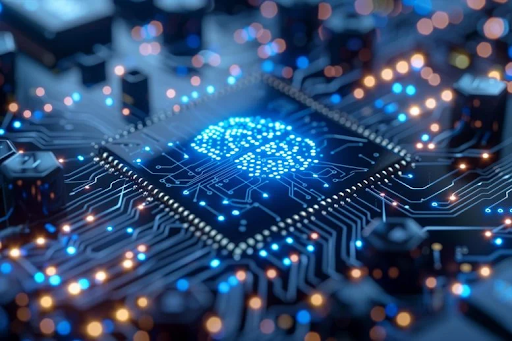"A groundbreaking study by Yunha Hwang and team has developed gLM, an AI system that decodes the complex language of genomics from extensive microbial data. This innovation enables a deeper understanding of gene functions and regulations, leading to new discoveries in genomics. gLM exemplifies the potential of AI in advancing life sciences and tackling global challenges. Credit: SciTechDaily.com" (ScitechDaily, New Harvard-Developed AI System Unlocks Biology’s Source Code)
Maybe quite soon, we can make biorobots that can clean our bodies more effectively than ever before.
Can we make the optical neural network in living cells? If that is possible. That makes it possible to create intelligent cells, living nanorobots that can remove non-wanted things from the body.
Can a single cell be as intelligent as humans? Researchers created the quantum dots inside living cells, and the quantum dots are tools that can make a revolution in quantum computers. Theoretically, researchers could create superposition and entanglement between those quantum dots.
The soundwaves can create tunnels through the cell, and those quantum dots can form the optical network in the cell. And even if the quantum computer cannot operate in the cell, the small binary network can turn the cell into a small computer. That can operate quite independently.
"Artist’s impression of optoacoustic computing. Credit: Long Huy Da" (ScitechDaily, AI Efficiency Breakthrough: How Sound Waves Are Revolutionizing Optical Neural Networks)
"A groundbreaking study by Nankai University scientists reveals a novel method for synthesizing quantum dots within the nuclei of live cells. This technique, leveraging the cell’s natural processes with glutathione, paves the way for advanced applications in synthetic biology, including the production of nanodrugs and nanorobots, by enabling precise inorganic material synthesis at the subcellular level." (ScitechDaily, “Truly Amazing” – Quantum Dots Successfully Synthesized Inside Living Cells!)
Is it possible to store information in the DNA molecule?
DNA is a chemical program, that controls everything in our body. If we can manipulate cells that create the fingerprint. That can allow us to create the living LP record. The system can store information in those genetically engineered fingerprints that are in cell cultures. Then the laser ray reads those images like the stylus reads the LP. The key element in that process is: can we control and use that information for controlling something like nanorobots or programming the neurons?
The genetically manipulated cells can create electric impulses that help to transmit data to the computers. The artificial cells can also create artificial neurotransmitters that allow data transmission to the cloned neurons. Researchers can use that system to increase neural damage treatment's success. And that thing can also make it possible to create the next generation of intelligent nanomachines. The new nanomachines can be like intelligent viruses. The DNA is the computer program that drives those virus-size machines.
In some models another side of the nanomachine is hydrophobic. And the other is hydrophile. The hydrophobic side pushes water and other liquids out from its shell. And the hydrophilic side pulls water and other liquids into it. That makes the bubble ahead that machine, that pulls it forward.
The power supply for the robot could be like this. There are gold atoms on that DNA that travel between two wheels. And the hemoglobin batteries give electricity to that system. The DNA controls the movements of the protein fibers that move this small robot. Or the nano-size generator rotates the protein fiber behind that virus-size robot. That protein fiber or tape acts like a propeller, and the system can push and pull the fibers at the nanomachine's shell in and out. That makes it possible to control the machine's directions.
https://scitechdaily.com/ai-efficiency-breakthrough-how-sound-waves-are-revolutionizing-optical-neural-networks/
https://scitechdaily.com/new-harvard-developed-ai-system-unlocks-biologys-source-code/
https://scitechdaily.com/organ-architects-the-remarkable-cells-shaping-our-development/
https://scitechdaily.com/reimagining-memory-new-research-reveals-that-superconducting-loops-mimic-the-brain/
https://scitechdaily.com/truly-amazing-quantum-dots-successfully-synthesized-inside-living-cells/
https://en.wikipedia.org/wiki/Fingerprint
https://en.wikipedia.org/wiki/LP_record




.jpg)













